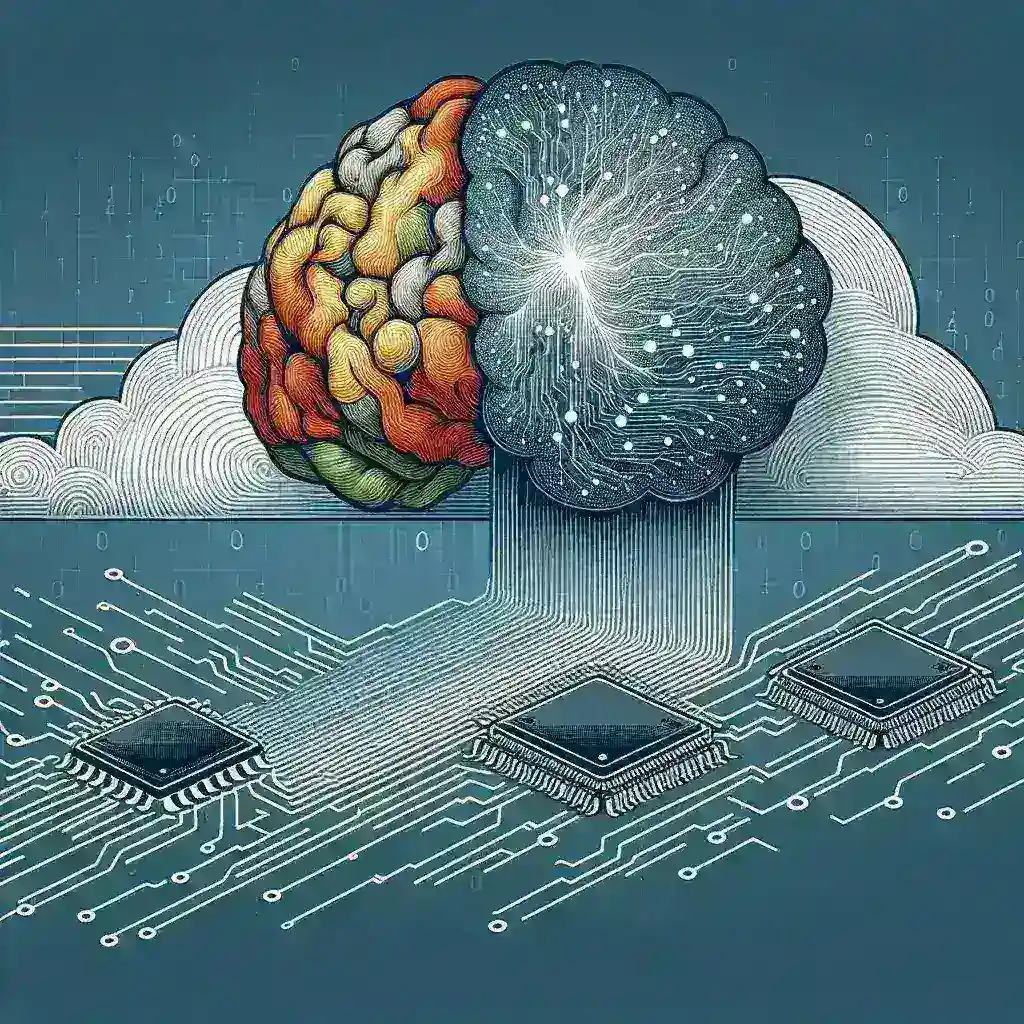Introduction
In the rapidly evolving landscape of artificial intelligence (AI), the demand for faster processing and greater efficiency is at an all-time high. Traditional computing architectures, while powerful, often struggle to meet the demands of complex AI workloads, particularly in cloud environments. Enter neuromorphic chips: a revolutionary technology that promises to transform cloud AI by mimicking the human brain’s neural networks. This article delves into why neuromorphic chips are poised to deliver substantial efficiency gains in cloud-based AI applications.
Understanding Neuromorphic Computing
Neuromorphic computing refers to the design of computer systems that simulate the architecture and operation of the human brain. Unlike traditional chips which process information in a linear fashion, neuromorphic chips enable parallel processing through networks of simple processing units that communicate in a manner similar to neurons. This represents a significant shift in how data is processed, especially for tasks involving deep learning and real-time data analysis.
Historical Context
The concept of neuromorphic computing dates back to the 1980s, with early research focusing on artificial neural networks. However, it has gained momentum in recent years due to advancements in materials science, microelectronics, and machine learning. Today, major tech companies and research institutions are investing heavily in neuromorphic chip development, underscoring their potential impact on AI efficiency.
The Mechanics of Neuromorphic Chips
Neuromorphic chips utilize spiking neural networks (SNNs) to process information. This approach is vastly different from conventional deep learning models that rely on backpropagation. In SNNs, neurons communicate through spikes, which convey information in the form of discrete events. This allows for greater energy efficiency and faster processing speeds, making them ideal for cloud-based AI applications that require real-time decision-making.
Efficiency Gains in Cloud AI
The integration of neuromorphic chips into cloud AI systems offers several compelling advantages:
- Energy Efficiency: Neuromorphic chips consume significantly less power than traditional processors, making them more sustainable and cost-effective for large-scale AI operations.
- Speed: Their ability to process information in parallel allows for faster data analysis, crucial for applications such as autonomous vehicles and smart devices.
- Scalability: Neuromorphic systems can easily scale to accommodate growing data demands, providing a flexible solution for cloud infrastructures.
- Real-time Processing: The ability to handle spikes means that neuromorphic chips can process information as it arrives, enabling instantaneous responses in AI applications.
Real-world Applications
Several industries are beginning to leverage the efficiency of neuromorphic chips in cloud AI:
- Healthcare: In medical diagnostics, neuromorphic systems can analyze patient data in real-time, leading to faster and more accurate diagnoses.
- Smart Cities: Neuromorphic chips are being used in traffic management systems to optimize flow and reduce congestion through real-time data analysis.
- Finance: They enable fraud detection systems to analyze transactions quickly and effectively, identifying anomalies and preventing losses.
Challenges and Considerations
While the potential of neuromorphic chips is immense, several challenges remain:
- Development Complexity: Designing and programming neuromorphic systems is more complex than traditional computing, requiring new methodologies and tools.
- Market Adoption: As a nascent technology, widespread adoption may take time as industries adapt to the unique capabilities and requirements of neuromorphic architectures.
- Integration: Integrating neuromorphic chips into existing cloud infrastructures can pose challenges, particularly concerning compatibility and data transfer protocols.
Future Predictions
Looking to the future, the potential of neuromorphic chips in cloud AI seems bright. As research continues and more organizations begin to adopt this technology, we can expect:
- Increased Investment: With growing awareness of their capabilities, investment in neuromorphic computing will likely surge, leading to rapid advancements.
- Wider Application Range: From robotics to natural language processing, the applications of neuromorphic chips will expand, enhancing various AI capabilities.
- Improved Collaboration: Collaboration between academia and industry will foster innovation and address the challenges associated with this technology.
Conclusion
Neuromorphic chips represent a paradigm shift in the way we approach AI and cloud computing. With their promise of unparalleled efficiency gains, they are set to play a crucial role in the future of AI applications. As we continue to explore the capabilities of these chips, it is clear that they will not only enhance cloud AI but also pave the way for new technological innovations that we have yet to imagine.

